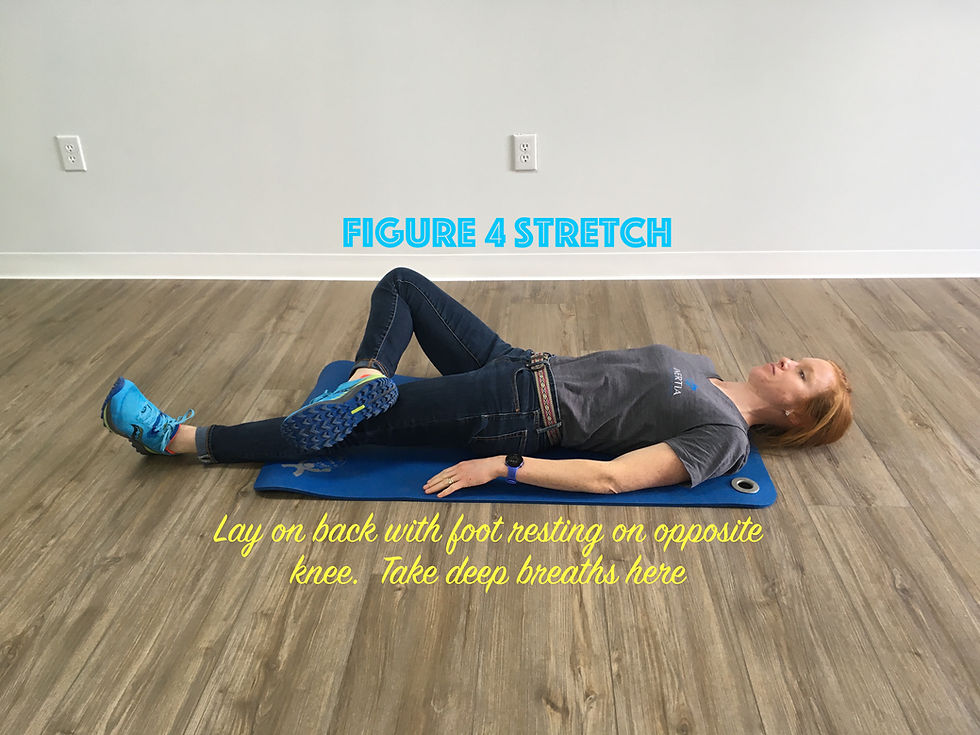Butts on Bikes: Finding the Pelvic Floor
- Bess

- Feb 13, 2022
- 3 min read

Over the past couple years, the pandemic has skyrocketed interest in both outdoor bicycling and indoor cycling. Apps such as Peloton, Zwift, and Strava have grown as popular ways to track fitness and make training fun.

It is well known that cycling offers excellent low-impact cardio and strength exercise benefits, but did you know that a bike seat is also an excellent tool for becoming familiar with the pelvic floor muscles? These muscles are a unique muscle group that seem to elude most people, even athletes who are very in touch with their bodies.
We often don’t appreciate the pelvic floor muscles’ contribution to core stability and power generation until there is a problem and we need to rehab them. Once that happens, you cannot improve the function of a muscle if you don’t know where it is or how to use it!

For the purposes of learning what, where, and why the pelvic floor does what it does, picture yourself on a bike seat. The ischial tuberosities, also known as the “butt” bones, are where the skeleton is designed to bear weight in a seated position.
If you are seated upright on your bike seat and rock side to side, these bony prominences that you shift your weight on and off are the lateral borders of the pelvic floor muscles.
When you tilt your pelvis forward onto the pubic bone and backward onto the tailbone, you have found the front-to-back borders of the pelvic floor muscles. There is a muscular band connecting the “butt bones” that separates the pelvic floor muscles into two triangles: the urogenital triangle in the front, and the anal triangle in the back. It is important to sit and stand in posture that evenly recruits both the front and back triangles of the pelvic floor muscles, as too much of either position can contribute to muscle stiffness, weakness, and imbalance. Before getting more into pelvic positions and ideal posture, picture how this unique hammock of muscles might move.
The pelvic floor muscles have both automatic "postural" activity and voluntary "contract/relax" activity. Postural muscles are always turned on to support your body against gravity when you are standing, sitting, or moving around. Voluntary muscles shorten and lengthen when you tell them to, like how the bicep moves the elbow. Bending your elbow voluntarily shortens the bicep and straightening your elbow lengthens the bicep. Voluntarily squeezing the pelvic floor muscles to hold back your pee causes the muscles shorten, and when you bear down to have a bowel movement they should lengthen.
Many people have heard of “Kegel exercises” as the one-stop shop for any bowel, bladder, or pelvic issue. Kegels require one to squeeze the pelvic floor muscles like they are holding back urine. The problem with Kegel exercises is they entail just one direction of movement: shortening the pelvic floor muscles without emphasis on lengthening as well. Frequent Kegels without relaxing the pelvic floor muscles can contribute to overly tight pelvic muscles, which perpetuate muscle imbalance through the core.
Back to the bike! To understand what different pelvic positions look like, again picture a person riding a bike. Different types of bicycles require different athlete posture and pelvic position.

Aggressive road cycling positions require the athlete to tilt the pelvis forward and bear weight through the urogenital triangle. Perpetual tightness in this front triangle of pelvic muscles can present as urinary urgency, fecal incontinence, and pain. The Figure 4 position with deep breathing for lengthening of the pelvic floor muscles can help decrease pain and irritation in these areas.


Recumbent cycling positions require the athlete to sit back on the tailbone, bearing weight through the anal triangle. Tightness in this posterior triangle of pelvic floor can present as constipation and difficulty with bowel movements, urinary incontinence, and pain. To combat excessive posterior pelvic floor tightness, stretches such as the floor 90-90 or standing pelvic release paired with deep breathing can encourage full range of motion and lengthening in these muscles.


Only when one can identify and engage the pelvic floor muscles appropriately can he or she appreciate the strength and stability contributions that the pelvic floor muscles provide to our whole system. Take a moment to identify your pelvic floor muscles next time you’re on a bike.
The pelvis is the skeletal foundation for all upper and lower body movement, so let’s give it the attention it deserves!






Comments